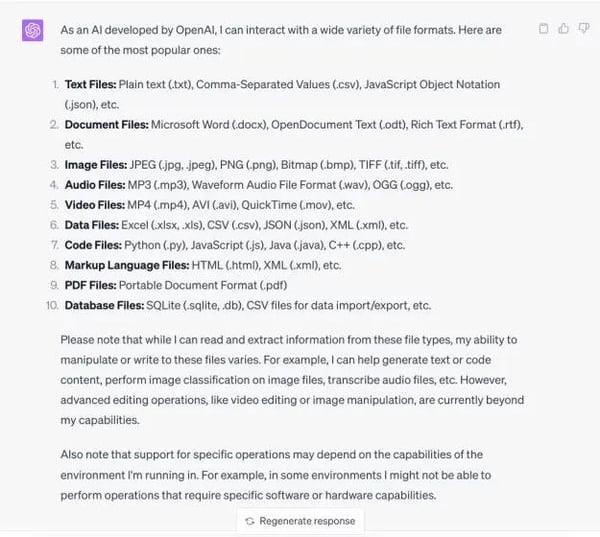You’ve probably heard or read that Meta recently launched a new social network called Threads. It’s essentially a Twitter clone, with the same purpose, look and feel.
Unlike most new social networks, Threads is actually built off an existing one—Instagram. This means that although Threads is its own app and social network, you need Instagram to sign up for it.
So far it’s off to an amazing start with more than 100 million sign-ups since launching on July 5. The question is this: Should your nonprofit organization join Threads?
Our POV is to jump on the bandwagon! Many orgs have already signed up, and some have shared an intro post or two. Our recommendation is to treat this platform as you would Twitter, starting off by sharing an intro post, then posting as you normally would in the Twitter space. There is even the opportunity to re-share some top-performing tweets from Twitter to bolster your profile at first.
We have seen declining performance on Twitter the past few months, and there have been a lot of changes and shifts in general on that channel.
So, how do you get started on Threads?
The whole setup process is simple and takes less than a minute. Your Instagram bio, profile picture and links are immediately converted into a new Threads account, so the user doesn’t have to do much.

Beyond that, they make establishing a presence relatively easy and quick with their auto-follow feature, meaning it will follow all the same accounts that you already follow on Instagram if you opt in. In a perfect world, this means your existing followers on Instagram who opt into this feature will automatically follow an account you make on Threads.
While we don’t think Threads will completely replace Twitter—at least not immediately—it is already off to a convincing start. The combination of providing a streamlined account setup process that almost ensures a solid following and being backed by Meta makes us believe this new platform is here to stay.
Bad news keeps piling up for Twitter
If a new competitor in Threads wasn’t bad enough, Twitter also just had major issues on its platform that affected users’ ability to view tweets.
Twitter CEO Elon Musk announced a temporary limit on the amount of scrolling users could do, and some began to see new “Rate limit exceeded” messages in their feeds. The changes also affected connections to tools like TweetDeck, and Google could no longer find tweets to share in search results.
This chaos followed a new report in June that illustrated a 59% decline in advertising revenue from April 1 through the first week of May. Twitter also forecast that its ad revenue in June would be down at least 56%, and that it’s “unlikely to improve anytime soon.”
Declining ad revenue, technical performance struggles and a new challenger could be a dangerous triple threat to Twitter’s long-term future.
Apple, Google rolling out new privacy features
Apple’s iOS 17 is already rolling out in public beta before the full launch in September, and it has a pretty big change that marketers must be aware of.
The new operating system for iPhones, iPads and Macs will automatically strip out personal identifiers and “fingerprinting” in URLs. While it’s a little unclear how much will be stripped out—will UTM tags be affected, for example?—this could be troublesome for fundraising campaign analytics.
Google is also rolling out similar privacy changes with its new Chrome browser APIs. Combined with Google Analytics 4, which became the law of the land on July 1, Google is beginning to implement the 18-month roadmap for its Privacy Sandbox.
We’ll be keeping a close eye on these changes and how they affect marketing attribution and tracking. But one thing we can count on is that neither company is likely to do too much damage to digital advertising and the revenue it brings in.
ChatGPT’s new Code Interpreter changes the game again
A digital marketing roundup just wouldn’t be complete without a mention of AI.
There’s a ton of chatter in this area, so it can be tough to separate out the news that truly matters. But here’s a nugget that we think is huge: OpenAI just released Code Interpreter to all ChatGPT Plus users.
Users can now upload files directly into ChatGPT to be analyzed, edited, adapted, etc., through custom scripts. A nonprofit organization, for example, could upload a donor transaction file to produce reports, 3D visualizations and even predictions.
Code Interpreter acts as a data engineer, analyst and scientist all in one, and it works with a ton of file formats, including TXT, PDF, DOC, DOCX, JPEG, PNG, MP4, AVI, CSV, JSON, XML, XLS, XLSX, CPP, PY, HTML, PDF, DB, SQLite, and much more.

How Salesforce is adding trust to AI
Speaking of AI, Salesforce is introducing a data masking feature for its AI Cloud called Einstein GPT Trust Layer.
In layman’s terms, this means that data going into its generative AI products will be stripped of all personal information and assigned a number ID. The AI will use the data for modeling, content, etc., then the personal information will be restored to the assigned number once the AI is complete.
With so many applications of AI by so many startup companies right now, the AI industry can be a bit like the Wild West when it comes to data controls and privacy. Salesforce’s goal is to ensure that personal data is kept safe and not shared inadvertently by a careless company or person.
New programmatic opportunities in broadcast radio
Advertising companies Triton and Basis Technologies are teaming up to provide programmatic ad buys for broadcast radio. We’ve seen programmatic ads for streaming radio, but this is the first time we’ve seen this in broadcast.
Right now, you can purchase programmatic ad inventory for iHeartMedia and its 855 radio stations across the U.S. This could be a great opportunity, especially for local and regional nonprofit organizations.
Google announces update to its Core Web Vitals
Google has been stressing website performance more and more in its search results, as we’ve shared before. The struggle for organizations is that Google gave little notice when it first began making these changes.
Well, Google just announced a new update to its Core Web Vitals, and this time it will wait until March 2024 to implement this change. Google is including a new metric called Interaction to Next Paint (INP), which will replace First Input Delay.
Core Web Vitals primarily measure how long it takes a page to load initially, but they don’t measure anything after the page loads. INP makes up for that by observing the delay between when a user interacts with something on the page (for example, a dropdown menu) and how long it takes for that feature to load.
If you’re curious about how nonprofit organizations across the U.S. are faring in this area, RKD published the 2023 Nonprofit Website Performance Report earlier this year. We analyzed more than 2,000 websites, with the goal of establishing the industry's first benchmark for nonprofit website performance standards. The results of our analysis were quite shocking.






Leave a comment: